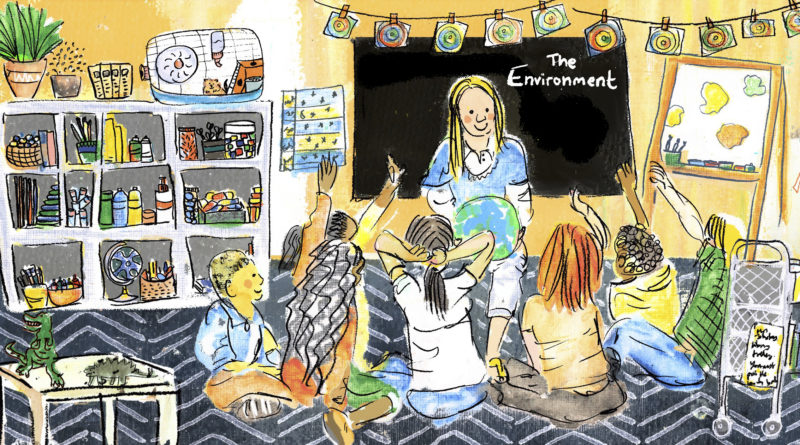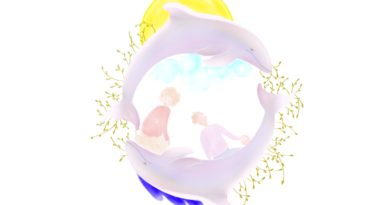Ask a Scientist – What kids want to know
We all know how spongelike children can be! With so much media coverage about climate change, mass extinctions, and protecting our environment, even young children are becoming increasingly interested in these topics. After all, the Earth is their home, too. At Family Matters we take this interest to heart! Our contributors’ children submitted questions about these burning topics, and two of our in-house scientists provided answers.
Sophie, age 7: How is water made?
Water molecules consists of oxygen and hydrogen, but you can’t just mix them together to make water. You need to add energy, a spark. But that produces water and an explosion! Hydrogen is flammable (can easily catch fire) and oxygen is combustible (can burn). We can’t make water safely.
So how did the Earth’s oceans, lakes, rivers, etc. become filled with water? Scientists think that asteroids and comets, with water from the universe’s formation, hit the young Earth, leaving the water. But could comets and asteroids bring enough water? Many scientists think not.
Some think the young Earth was bombarded by oxygen and heavy tiny particles (elements) created within the Sun. Oxygen combined with hydrogen and gases released from deep within the Earth to form water. Some think water came from Earth’s interior and escaped to the surface by way of earthquakes and volcanic eruptions.
Since we need water to live and water is difficult to make, we rely on the water in lakes, rivers and oceans. Water evaporates from these bodies; is carried up in the atmosphere (the air around us), where it collects into clouds (clouds are just lots of water vapor). After the clouds become heavy with water vapor (reach the saturation point), water droplets form; this is rain. This rain hits the ground and runs downhill and collects into bodies of water, like lakes and oceans.
Some scientists want to increase how much water we have available by removing it from air. Machines could pull water vapor out of the air. If the air cools down enough, then water droplets will form (condensation). The process is still just being explored, but who knows? Maybe one day we’ll make water from water vapor at home!
Alex, age 5: How many types of dinosaurs were there and did climate change make them extinct?
Dinosaurs lived between 251 to 65 million years ago. Scientists have identified more than 500 dinosaur general types (genera) and 1,000 distinct types (species). We aren’t sure if climate change caused their extinction, but it certainly helped. By studying why animals went extinct in the past, scientists can understand how climate change causes animals to go extinct today and in the future.
We know that the Earth’s environment changed dramatically 66 million years ago. During the age of dinosaurs, the temperature on Earth was very warm and stable, and the atmosphere was full of carbon dioxide (CO2, a greenhouse gas) and oxygen, due to volcanic eruptions. Once volcanic activity stopped, there was less oxygen. Large dinosaurs needed lots of oxygen so they couldn’t survive. Only a few scientists think this is the reason they died out.
Scientists know there were massive volcanic eruptions (the Dekann Traps) before the dinosaurs became extinct; some scientists think the gases (carbon dioxide and sulfur gases) caused the extinction by changing the climate. The Earth warmed up (heat from the sun is trapped in the atmosphere – the greenhouse effect – and many animals went extinct. Earth scientists know this happened 100s of million years ago when other animals went extinct.
Most scientists think that the huge Chicxulub asteroid (around 10 km in width) that hit Earth 66 million years ago played a big part in the extinction of dinosaurs. The violent impact sent dust, ash, sulfur, etc. into the air. Sunlight was blocked, so it became very cold. This caused the extinction of dinosaurs (and other animals, too). So, although we aren’t 100% sure which theory is best, we know that climate change is important.
Miles, age 9: How long does it take to make compost?
It depends, but most think it takes from two weeks to two years to make compost. The length of time depends on the type of material you use, how regularly you supply this material to your compost bin, and the size of the bin, and how much work you put into making compost (turning over the compost daily to aerate).
You need material that is high in nitrogen (kitchen scraps, peelings, fruit cores, eggshells, coffee grounds, grass clippings, leaves, etc.) and equal parts of high-carbon material (like wood chips, twigs, sawdust, paper and straw) plus water. Water is important, because during dry spells, compost will take much longer to develop.
Hot composting can yield good compost results in about 4 weeks, while cold composting can take from one to two years. Still, compost should mature to allow worms to create high-quality compost, adding 6 months to your composting time.
Emily, age 8: How does plastic hurt sea turtles? I love sea turtles and want to protect them.
Sea turtles are injured or killed by ingesting (eating) plastic and by becoming entangled in it. Plastic might also impact their ability to make baby sea turtles or fend off diseases.
Seven species of sea turtles all eat different things. The Leatherback and Loggerhead sea turtles like to eat jellyfish and sea squirts; green turtles like to eat algae. Sadly, all sea turtles are eating plastic; they mistake plastic for their favorite food. A plastic sack looks rather like a jellyfish. Scientist found that 17 % of Loggerheads and 64 % of green turtles that they studied had eaten plastic! Perhaps plastic smells like food.
Turtles can become entangled in plastic and drown; they can be caught in plastic where they can’t escape predators like sharks. Baby sea turtles who hatch in nests on beaches can easily become tangled and unable to reach the sea.
Plastic doesn’t belong in the oceans. If you want to protect sea turtles, then do your best to keep plastic out of the oceans! Buy fewer plastic products – this helps a lot. Don’t use plastic straws or bags and always recycle as much plastic as you can.
Julia age 8: I always get confused when I hear that the climate is changing: sometimes it rains and sometimes it is hot – it always changes. Why is climate change so important?
What you describe is weather change; it rains or is dry or is hot or cold. Some winters are snowier than others and some summers are hotter than others. These weather changes take place over hours, days, or weeks. Climate is the average weather conditions in a place for a long time, usually at least thirty years.
Climate change is change in the Earth’s usual temperature or a change in where and how much rain and snow usually falls over time. The Earth’s climate can change naturally over thousands and millions of years; Earth’s distance from the Sun can change, and this impacts Earth’s climate. The Sun can send varying amounts of energy to the Earth, or oceans can change size or volcanos can erupt, thereby changing our climate.
Nowadays, scientists are concerned about changes in the climate caused by people (for example, through burning of fossil fuels like gas and oil). This process puts greenhouse gases in the atmosphere, where heat from the Sun is trapped. The Earth, air and water heat up.
Earth scientists have observed a big rise in Earth’s average temperature over the past 100 years; this will continue in the future. This is important, because higher temperatures cause many problems! Ice on Antarctica melts, releasing water into the world’s oceans, causing sea levels to rise and putting people who live on islands or coastal cities into danger. In Switzerland, scientists record the temperature rising too; mountain glaciers are melting and retreating, and many areas that had frozen ground (permafrost) do not anymore. This can cause rock- and landslides or cause houses or cable car stations in the mountains to be unstable, also putting people into harm’s way. When sea ice melts, the sea level doesn’t change, but the circulation of the water in the oceans does and this impacts climate and life on land and the oceans. And, as the ocean temperature rises, more heat goes into the Earth’s atmosphere, which leads to more storms and more severe storms like hurricanes.
Since the Earth is our home – the only one we have – understanding and caring about Earth’s environment and climate is important for us all.
By Dr. Teresa Bingham Müller and Dr. Daniel Müller
Teresa is an earth and environmental scientist, writer, editor and educator. She has worked as a research and applied scientist to understand human impact on waters and soils, today and during the past 10,000 years. She has been a university educator, student advisor, and program strategist while raising three sons.
Daniel is an earth- and climate scientist who currently works as a university strategist and manager. He spent many years exploring the world’s oceans and land masses to understand natural climate change (over the last 65 million years). If he and Teresa aren’t hiking and collecting fossils and rocks, they are discussing everything from cyber- to food security and encouraging their adult sons and grandchildren.
Illustration by Lemady Rochard
Lemady is a British artist and illustrator living near Einsiedeln. Her first illustrated book The Little Mermaid’s Son by Annahita de la Mare was published in December 2020 and is available on Amazon. She also runs Storycraft classes and parties for children at the Storycraft Studio in Rüschlikon, ZH. She has a background in theatre arts and children’s literature. More information & contact details on her website http://www.lemady.ch
Facebook: http://www.facebook.com/lemadyart
Instagram: http://www.instagram.com/lemady_art



